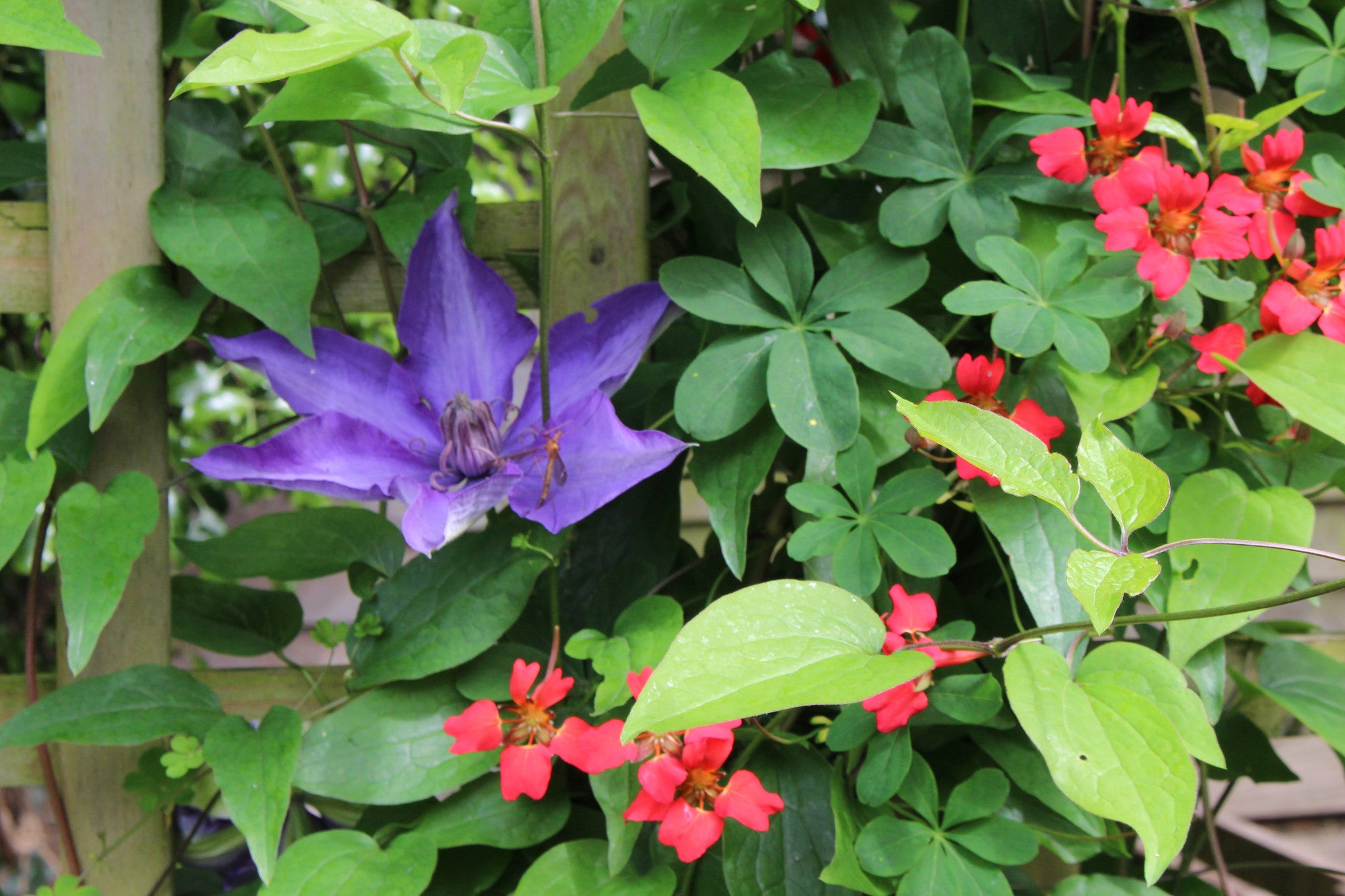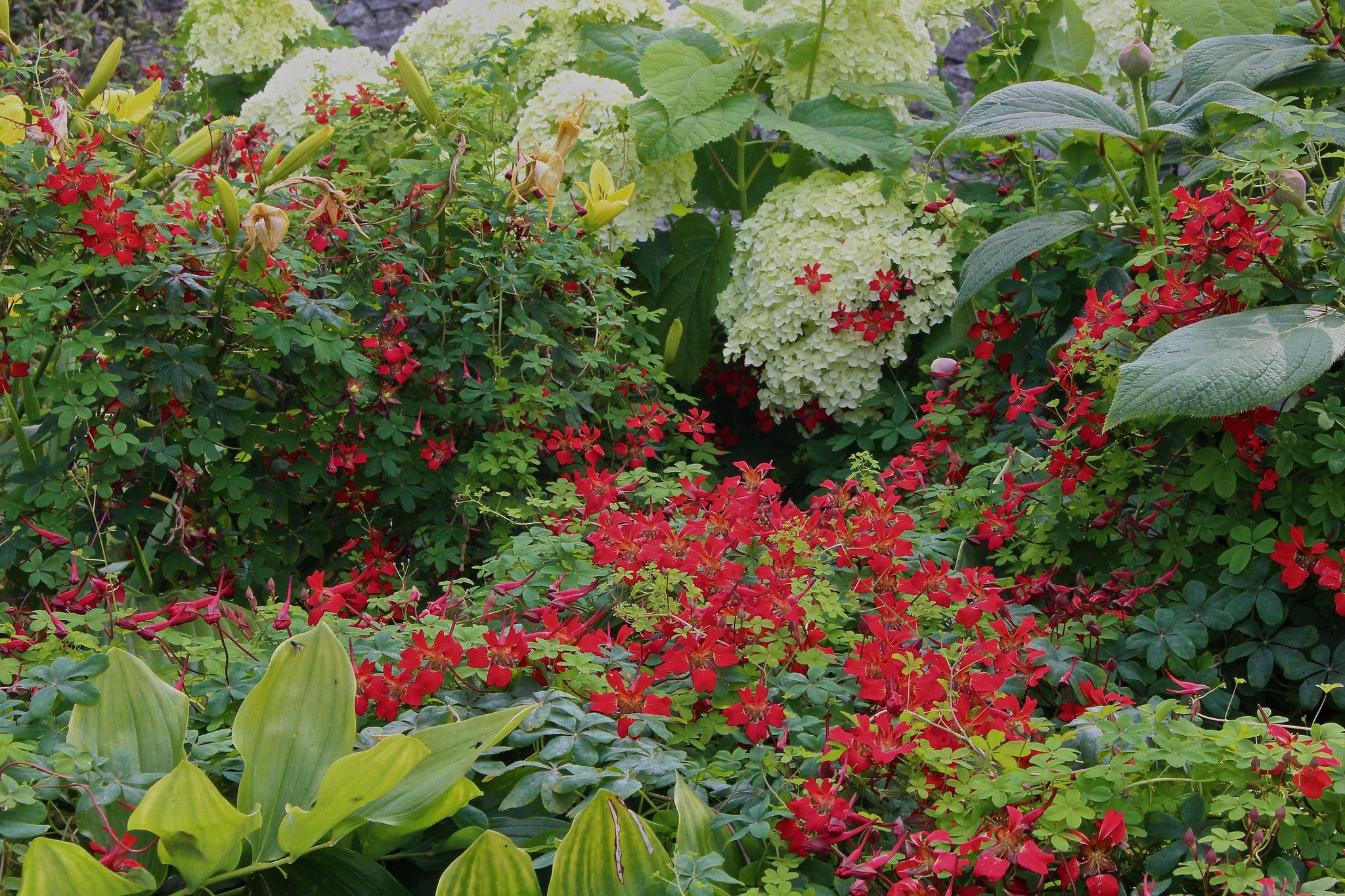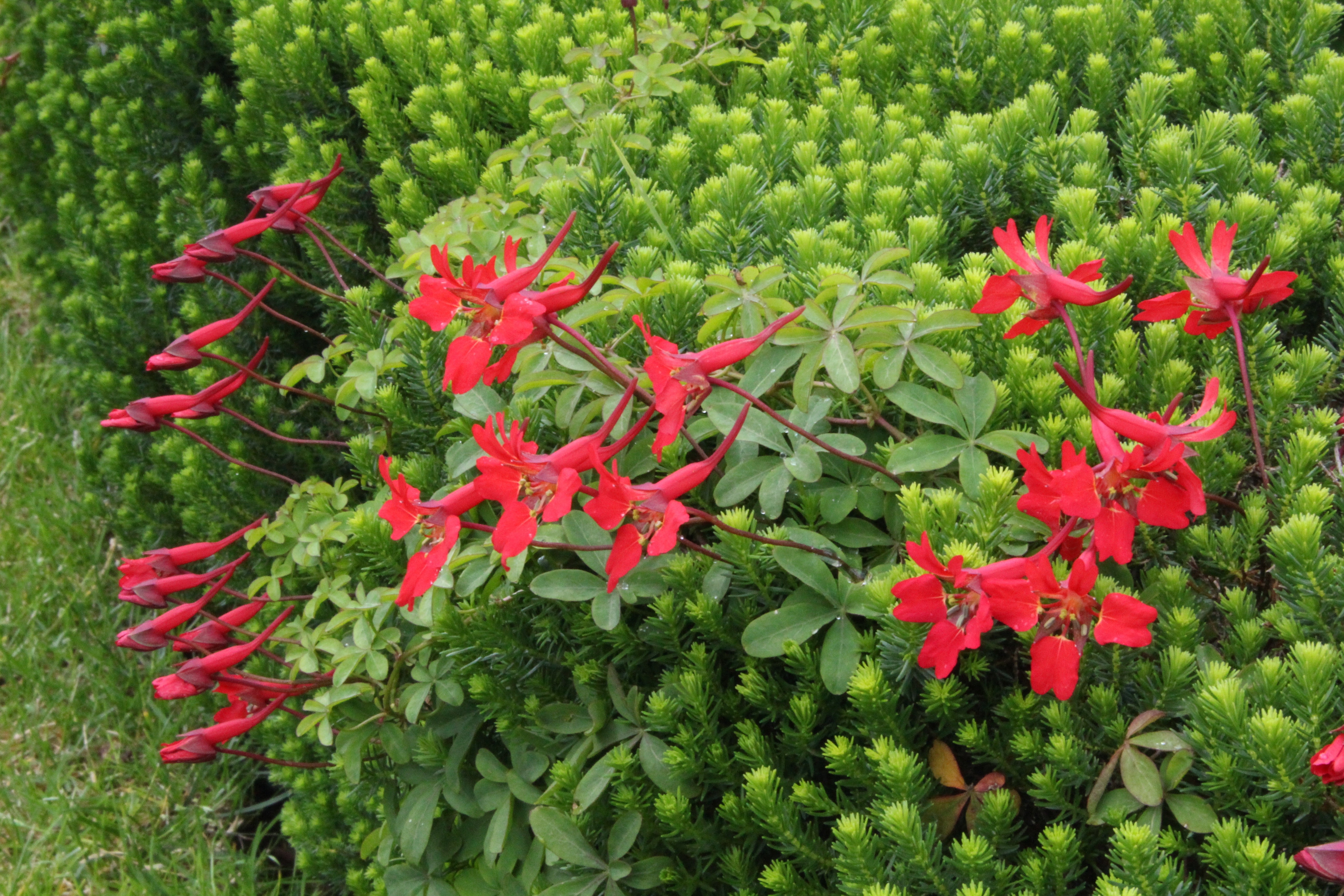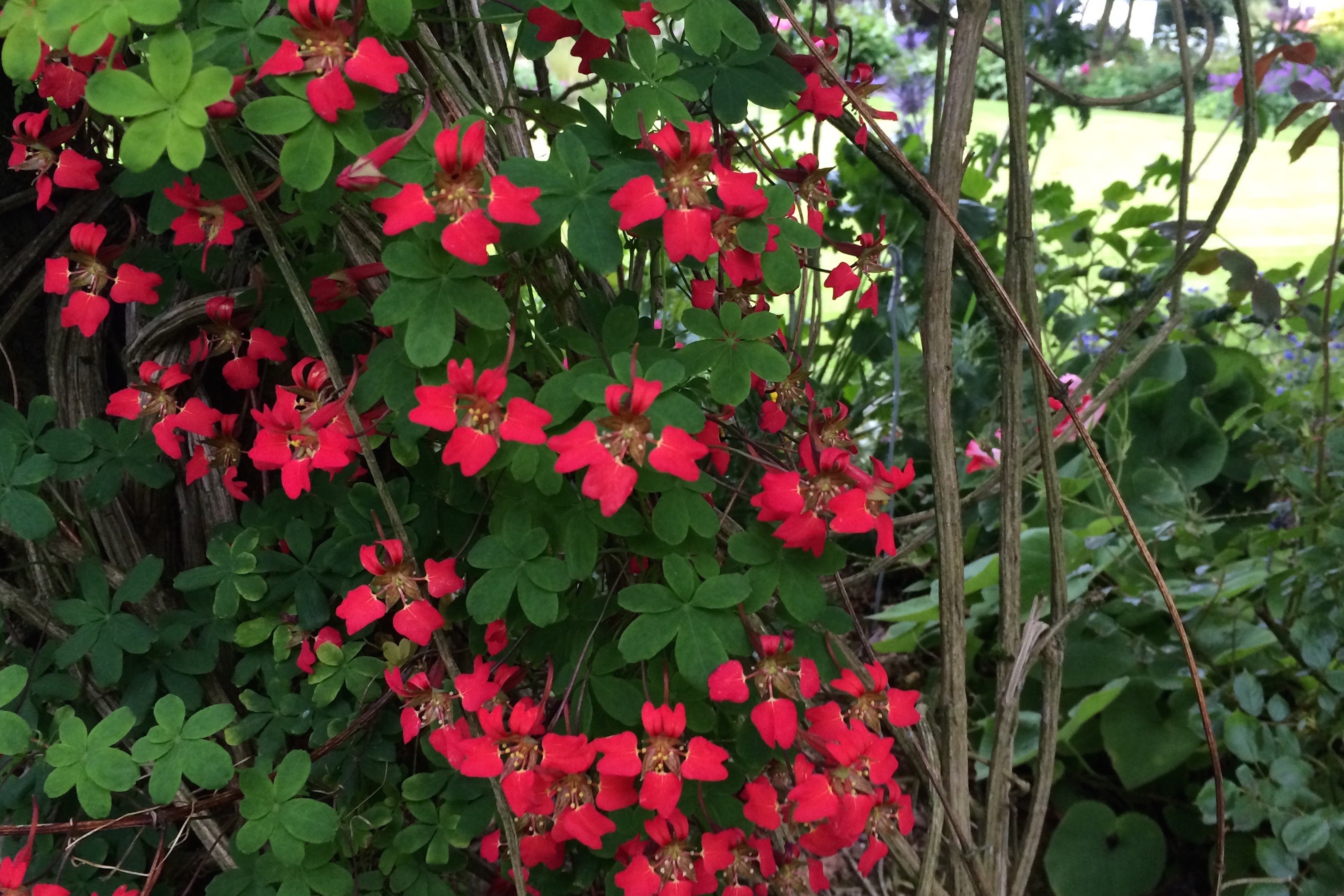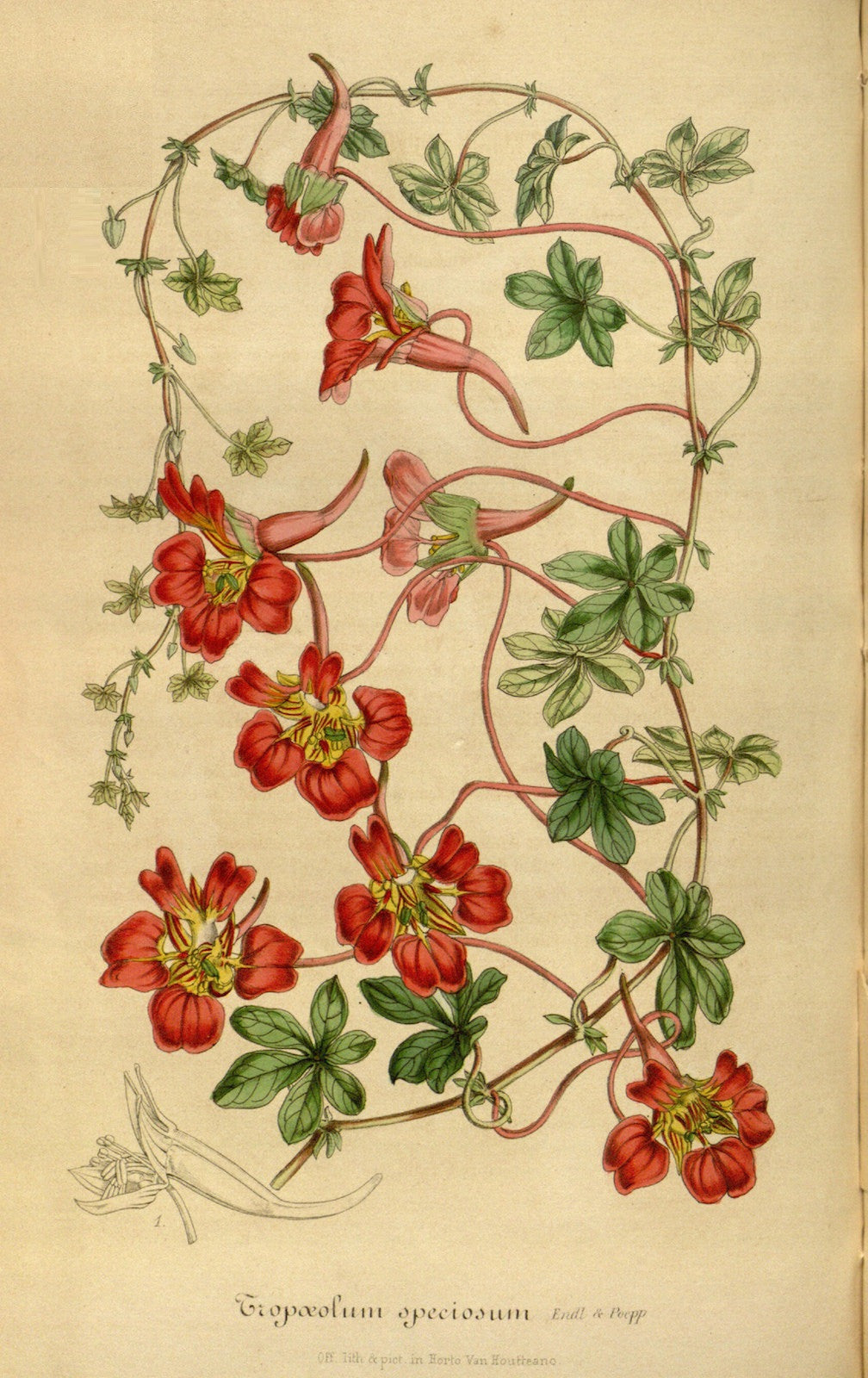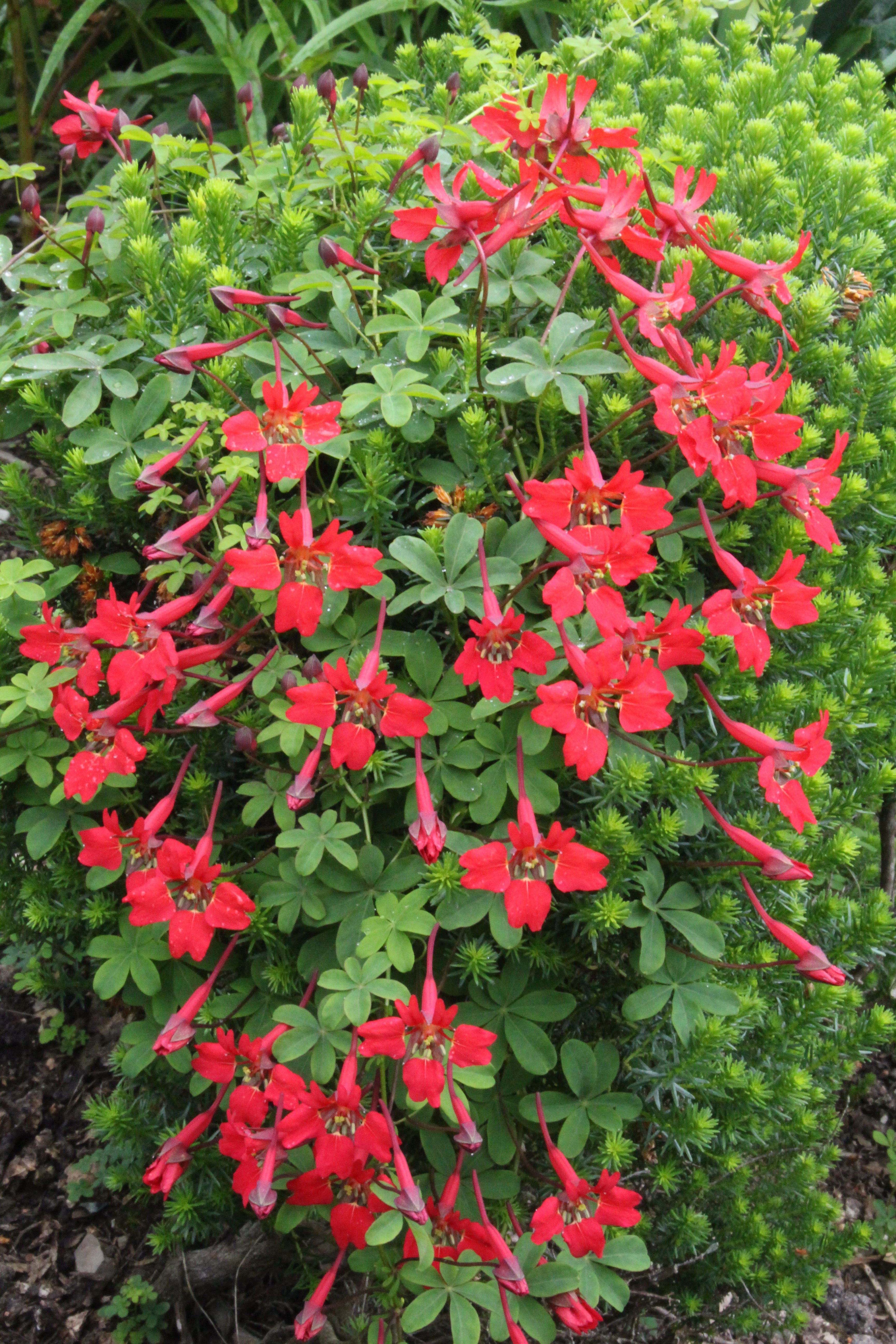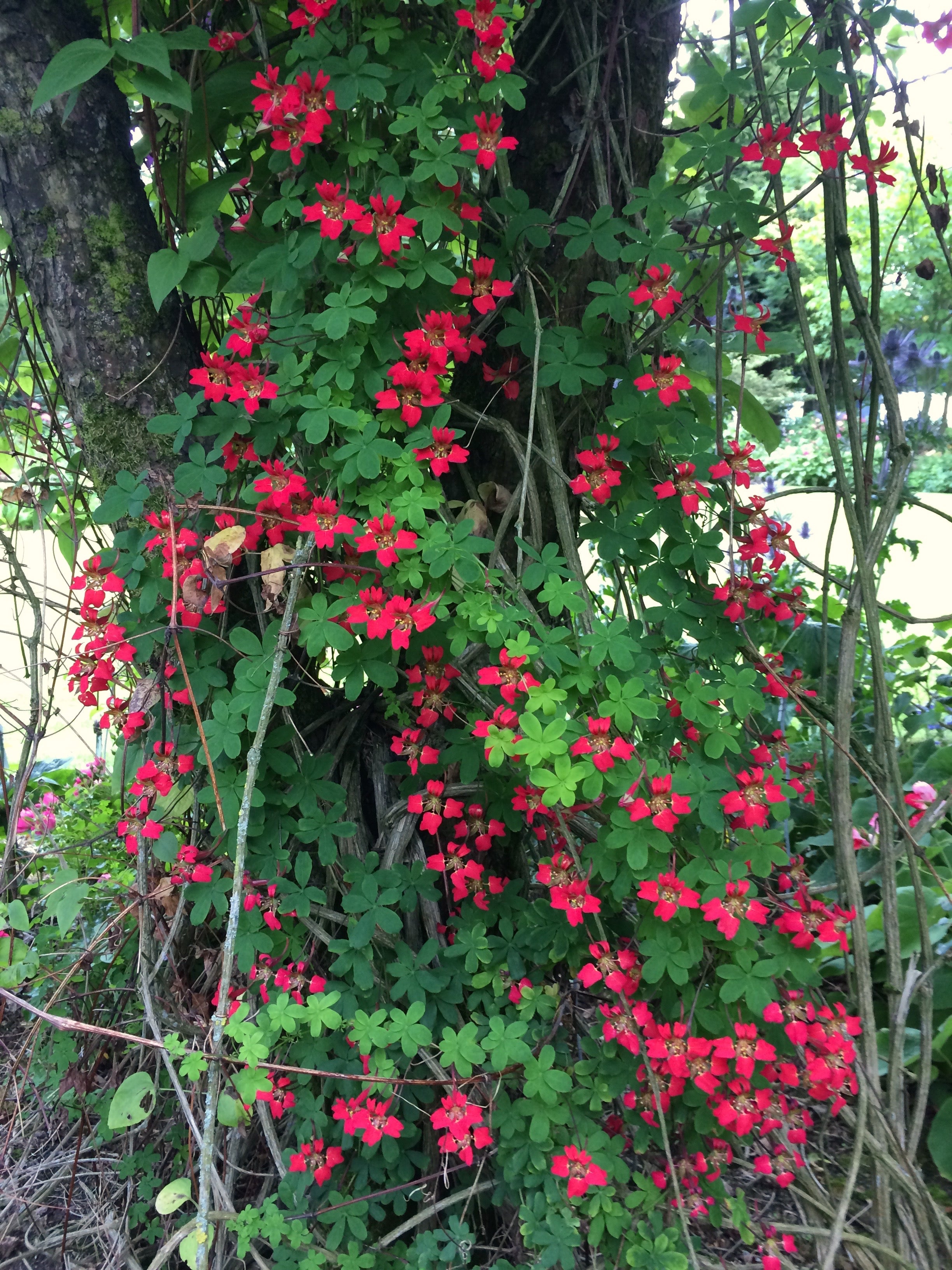Tropaeolum speciosum
Approx. 0.5 litre pot
About this cultivar:
Tropaeolum speciosum is well adapted to cool, moist climates and famously does well in Scotland; hence the common name 'Scottish Flame Thrower'. It sends up shoots which thread their way through hedges and shrubs and which, when they emerge into the light, bear brilliant red flowers among small, five or six-lobed leaves. After the flowers fade, the red calyces persist, curling back to reveal the three blue berries. It is difficult to establish but is an attractive garden plant when it thrives. This plant has gained the Royal Horticultural Society's Award of Garden Merit.
- Position: Full sun, partial shade
- Soil: Almost any soil, grows well in Ballyrobert
- Flowers: June, July, August, September
- Other features: Dappled Shade or Full Shade Loving, Grows well in Ballyrobert, Royal Horticultural Society Award of Garden Merit (RHS AGM)
- Hardiness: Fully hardy, grows well in Ballyrobert
- Habit: Climbing
- Foliage: Deciduous
- Height: 240 - 360 cm (8 - 12 ft)
- Spread: 60 - 120 cm (2 - 4 ft)
- Time to full growth: 2 to 5 years
- Plant type: Herbaceous Perennial, climber
- Colour: Green, red
- Goes well with: --
About this genus:
Tropaeolum (trop-e-o-lum) commonly known as nasturtium (literally "nose-twister" or "nose-tweaker" in olde english), is a genus of roughly 80 species of annual and perennial herbaceous flowering plants.
The first Tropaeolum species was imported into Spain by the Spanish botanist Nicolás Monardes. He published an account in 1569 entitled "Joyful News out of the Newe Founde Worlde" in which he described, among other things, the plants and animals discovered in South America. The English herbalist John Gerard reports having received seeds of the plant from Europe in his 1597 book Herball, or "Generall Historie of Plantes". Tropaeolum was named by the Swedish botanist Carl Linnaeus, who chose the genus name because the plant reminded him of an ancient custom. After victory in battle, the Romans used to set up a trophy pole called a tropaeum (from the Greek tropaion, source of English "trophy"). On this the armour and weapons of the vanquished foe were hung. Linnaeus was reminded of this by the plant as the round leaves resembled shields and the flowers, blood-stained helmets.
Nasturtiums were once known commonly as "Indian cresses" because they were introduced from the Americas, known popularly then as the Indies, and used like cress as salad ingredients. John Gerard called the plant "Indian Cresses" in his herbal. J R R Tolkien commented that an alternative anglicization of the name was "nasturtian" rather than "nasturtium".
Tropaeolum often has somewhat succulent stems and sometimes tuberous roots. It comes in a range of forms and colours including cream, yellow, orange and red, solid in colour or striped and often with a dark blotch at the base of the petals. It is vigorous and easily grown and does well in sun and part shade.Almost any soil is suitable. Some varieties adopt a bush form while others scramble over and through other plants and are useful for planting in awkward spots or for covering fences and trellises.


